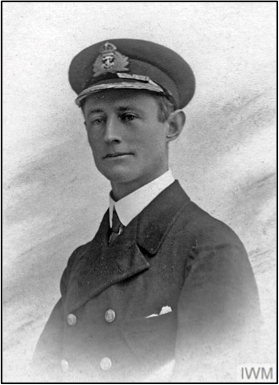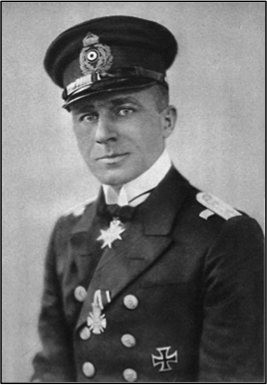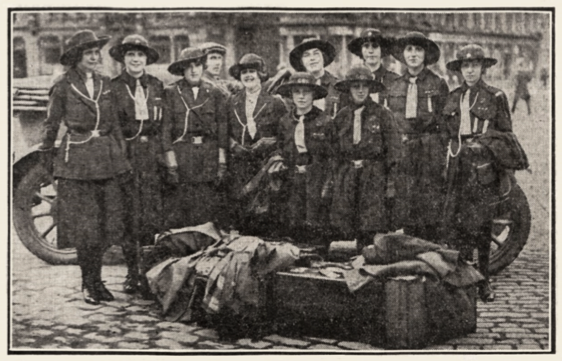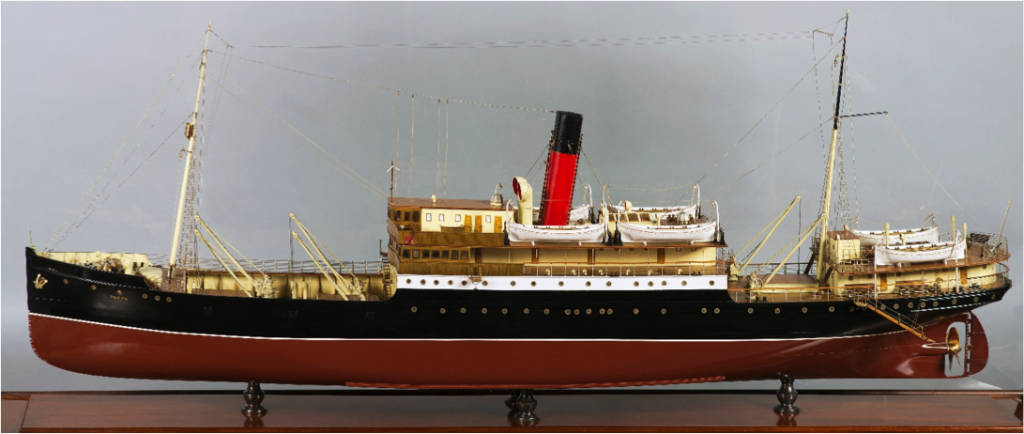Great War Dundee
This is Dundee's story of those that served in the First World War, and of the people left at home
‘Engaged submarine with gunfire.’ HMS Perth and the Red Sea Patrol
Also requisitioned from the D.P.&L. in 1915, Dundee’s brand new, Caledon-built sister ship SS Perth was stripped of her luxurious fittings and fitted with four-inch guns before setting sail on her maiden voyage to Aden, a port at the southern entrance to the Red Sea. There, she joined Admiral Rosslyn Wemyss’ Red Sea Patrol and began intercepting supplies destined for Turkish garrisons in the Arabian Peninsula.
On 15 June 1916, HMS Perth and the cruiser HMS Fox steamed into the inner harbour at Jeddah, the port for Mecca, and bombarded the Turkish troops manning the city walls. This operation, carefully coordinated with an attack from the landward side by an Arab irregular force and an bombing raid by a seaplane from HMS Engandine, was one of the first combined operations involving land, sea and air forces. The Turkish garrison surrendered the following morning and the Arab force, growing in numbers by the hour, marched on and took Mecca. Thus began the Arab Revolt led by Sharif Hussein, Prince Feisal and T. E. Lawrence, better known as Lawrence of Arabia.

This operation, carefully coordinated with an attack from the landward side by an Arab irregular force and an bombing raid by a seaplane from HMS Engandine, was one of the first combined operations involving land, sea and air forces. The Turkish garrison surrendered the following morning and the Arab force, growing in numbers by the hour, marched on and took Mecca. Thus began the Arab Revolt led by Sharif Hussein, Prince Feisal and T. E. Lawrence, better known as Lawrence of Arabia.
The desert war over, on 1 October 1918 HMS Perth was escorting a homeward-bound convoy across the Bay of Biscay when one of her lookouts sighted a heavily-armed, ocean-going U-boat approaching on the surface and clearly preparing to attack. Commander Gerald Parnell immediately turned his ship to face the enemy and, in the gun battle that followed, two of Perth’s crew were killed and two merchantmen were sunk.

The U-boat eventually gave up and sailed away, leaving the battered Perth to pick up survivors from the sunken merchantmen, bury her dead and rejoin her convoy. Only much later would Commander Parnell and his crew discover that they and their little converted coaster had taken on U-139 commanded by Kapitänleutnant Lothar von Arnauld de la Perière who remains today the most successful submarine commander of all time credited with sinking 195 ships.
Guns removed and restored to her pre-war elegance, Perth restarted the pre-war Dundee – Tilbury sailings on Saturday 20 September 1919. There were also occasional trips taking tour parties to Brighton, Southend or across the North Sea to Holland. But passenger numbers were declining due to competition from road and rail and by the late 1930s the ship had been reduced to summer-only sailings.

It seemed as though the old Red Sea warrior’s days were numbered, but the outbreak of the Second World War in 1939 saw her called into action once more. This time she served as a rescue ship in more than sixty North Atlantic convoys, saving the lives of 455 Allied seamen and airmen, among them sixty-nine seamen from convoy HX 217 rescued from a freezing, storm-lashed North Atlantic in December 1942. This was highly dangerous work, right in the path of attacking U-boats and all too often in violent Atlantic storms. Only two rescue ships exceeded Perth’s extraordinary record of lives saved and those ships, Zamalek and Rathlin, were employed on the Arctic convoy run. Perth had also been fitted with HF/DF radio equipment that allowed her specially trained operators to accurately track enemy signals traffic, vital information for escorting warships and aircraft that saved many more lives.

Sold by D.P.&L. in 1946, this gallant little Dundee-built ship would steam on for various owners, not least the Falkland Islands Company, until she was scrapped in Italy in 1962. Today, a large model of Perth (above) forms the centre-piece of the Maritime Quarter display in Dundee’s McManus Galleries.
